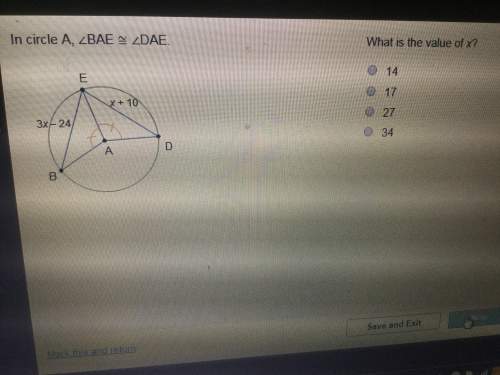
Mathematics, 29.02.2020 05:26 erbs2003
3.12 Speeding on the I-5, Part I. The distribution of passenger vehicle speeds traveling on the Interstate 5 Freeway (I-5) in California is nearly normal with a mean of 72.6 miles/hour and a standard deviation of 4.78 miles/hour.47 (a) What percent of passenger vehicles travel slower than 80 miles/hour? (b) What percent of passenger vehicles travel between 60 and 80 miles/hour? (c) How fast to do the fastest 5% of passenger vehicles travel? (d) The speed limit on this stretch of the I-5 is 70 miles/hour. Approximate what percentage of the passenger vehicles travel above the speed limit on this stretch of the I-5.

Answers: 1


Another question on Mathematics

Mathematics, 21.06.2019 13:00
In the diagram below, dab and dac are adjacent angles. if mdac = 25°, what is mdab in degrees? what is mbac in degrees?
Answers: 3


Mathematics, 21.06.2019 19:10
How many different three-digit numbers can be formed using the digits 1 comma 2 comma 9 comma 6 comma 4 comma 3 comma and 8 without repetition? for example, 664 is not allowed.
Answers: 1

Mathematics, 22.06.2019 00:20
Data for the height of a model rocket launch in the air over time are shown in the table. darryl predicted that the height of the rocket at 8 seconds would be about 93 meters. did darryl make a good prediction? yes, the data are best modeled by a quadratic function. the value of the function at 8 seconds is about 93 meters. yes, the data are best modeled by a linear function. the first differences are constant, so about 93 meters at 8 seconds is reasonable. no, the data are exponential. a better prediction is 150 meters. no, the data are best modeled by a cubic function. a better prediction is 100 meters.
Answers: 2
You know the right answer?
3.12 Speeding on the I-5, Part I. The distribution of passenger vehicle speeds traveling on the Inte...
Questions





English, 13.07.2019 04:00






Business, 13.07.2019 04:00

Biology, 13.07.2019 04:00

Social Studies, 13.07.2019 04:00



Mathematics, 13.07.2019 04:00


Advanced Placement (AP), 13.07.2019 04:00

Mathematics, 13.07.2019 04:00

 and standard deviation
and standard deviation  , the zscore of a measure X is given by:
, the zscore of a measure X is given by:













